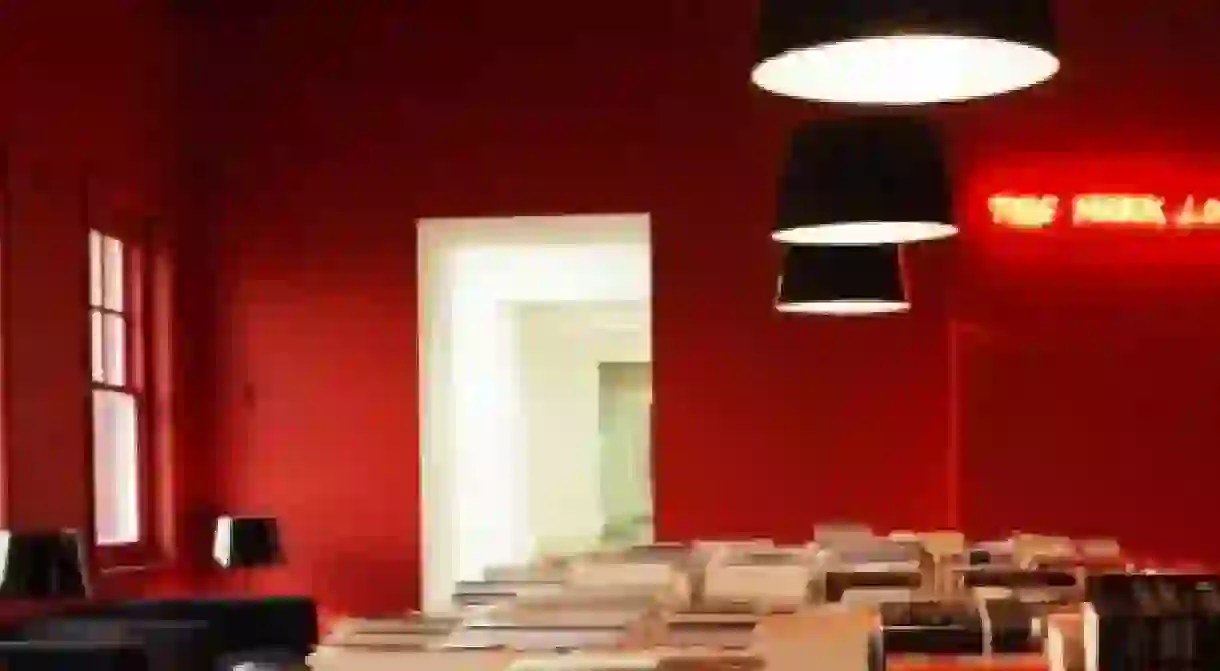Chilean Artist Alfredo Jaar: Controversy Through Art

Alfredo Jaar is one of the most culturally, politically, and socially charged visual artists of our time. From genocide to AIDS, his work covers difficult subjects, reminding observers of the challenges we still face in the world today. Over the past 30 years, Jaar has pushed the boundaries of art and influenced how it is perceived. We take a look at his life and work below.

Born to a Socialist Chilean family in 1956 Santiago, Jaar was exposed to a hot political climate from birth. When he was 5, he and his immediate family moved to Martinique. While his immediate family identified closely with a liberal ideology, his extended family was significantly more conservative. In 1972, after two years of leadership in Chile by democratically elected Socialist President Salvador Allende, Jaar’s father declared the family would return to Chile at the same time the rest of his family was attempting to flee the Socialist state.
At 16, Jaar was thrust into a country that was deeply divided politically. One year after Jaar’s return, President Allende was assassinated and replaced by Commander-in-Chief Augusto Pinochet. With Pinochet came a whole new approach to politics and society, and he would eventually become one of the most gruesome dictatorships of all time.
Jaar learned to speak between the lines and communicate indirectly in order to survive as an artist. For almost a decade Jaar lived under scrutiny of the Pinochet regime until he relocated to New York in 1982. But it’s important to keep in mind that Jaar credits only a portion of his inspiration to his experience in such a politically and socially tense atmosphere, emphasising that all his experiences have made him the artist he continues to be today.

Alfredo the Architect
With a formal education in architecture, Jaar secured a position at the architectural firm SITE in New York. Soon he would integrate his knowledge and passion for architecture with other forms of art. Jaar approaches art much like an architect—he considers the work in social, political, cultural, and physical terms. When he makes art he thinks of it as sort of problem solving, as an architect would view a project. Perhaps it’s fitting then, that Jaar considers himself an architect first and an artist second.
The Hard Truth In Art
Jaar attempts to call attention to the difficult realities in the world, to which he feels people have become desensitized. Through installation, film, and photography he covers deep and complex subjects like genocide, famine, epidemics, political corruption, military conflicts, and the struggles developing nations face in a global setting. By focusing on issues relevant to Latin America, Africa, and Europe, his work aims to remind the audience of the injustice and evils that happen everyday.
One of his best-known installations was part of a six-year project that culminated in The Silence of Nduwayezu, a presentation about the genocide in Rwanda in which twenty percent of the population perished. Other works include his first film Muxima, meaning ‘heart’ in Kimbundu, the indigenous language of Angola. The film is divided into ten sections, each addressing a different aspect of Angolan history, including colonization, the civil war, AIDS, and the consequences of the oil industry’s activities in the nation. In Latin America, Jaar went to the Serra Palada gold mine in north-eastern Brazil to document the atrocious working conditions of the self-employed miners and contrasted these images with the fluctuations of the global price of gold, calling it Gold in the Morning.
Many of Jaar’s productions have come with grand praise and acknowledgement, earning him recognition as a Guggenheim Fellow in 1985, a MacArthur Fellow in 2000, a recipient of the Premio Extremadura a la Creación from Spain, and winner of numerous awards and endowments.

Better Luck Next Time
In 1987 Jaar released A Logo for America, a criticism of the misuse of the term ‘America’ for overlooking the other components of the Americas. In Times Square, the phrase ‘This is not America’ written on an outline of the United States followed by ‘This is not America’s Flag’ laid across a representation of the United States flag. The response was a hailstorm of such proportions Jaar had not anticipated.
National Public Radio interviewed people while they watched the screen flash the messages, with some questioning on live national radio whether what he was doing was legal. The work was meant to comment on the importance language plays in geopolitical reality, but that was not how many perceived it.
Twenty-five years later Jaar decided to try the piece again with some adjustments. The captions over the silhouette of the United States and the United States flag stayed the same, and a third screen was added to the presentation. The word ‘America’ was displayed across the screen, with the letter R replaced with the outline of North and South America. While New Yorkers were not on live radio denouncing the project, opposition was still vocal, with some referring to the project as ‘Anti-American’.
Impact of Art
Jaar’s art may at times be controversial, but it has also undoubtedly had a significant impact on the art community and the cultures on which it comments. From the million blank Finnish passports he displayed to bring attention to the extraordinary number of migrants unable to obtain EU citizenship to the Infinite Cell, where strategically placed mirrors create a never ending image meant to provoke artists, his projects have inspired artists from all over the world. In 2006, after over twenty years abroad, Jaar finally returned to Chile for an exhibition at the Fundación Telefonica in Santiago.













